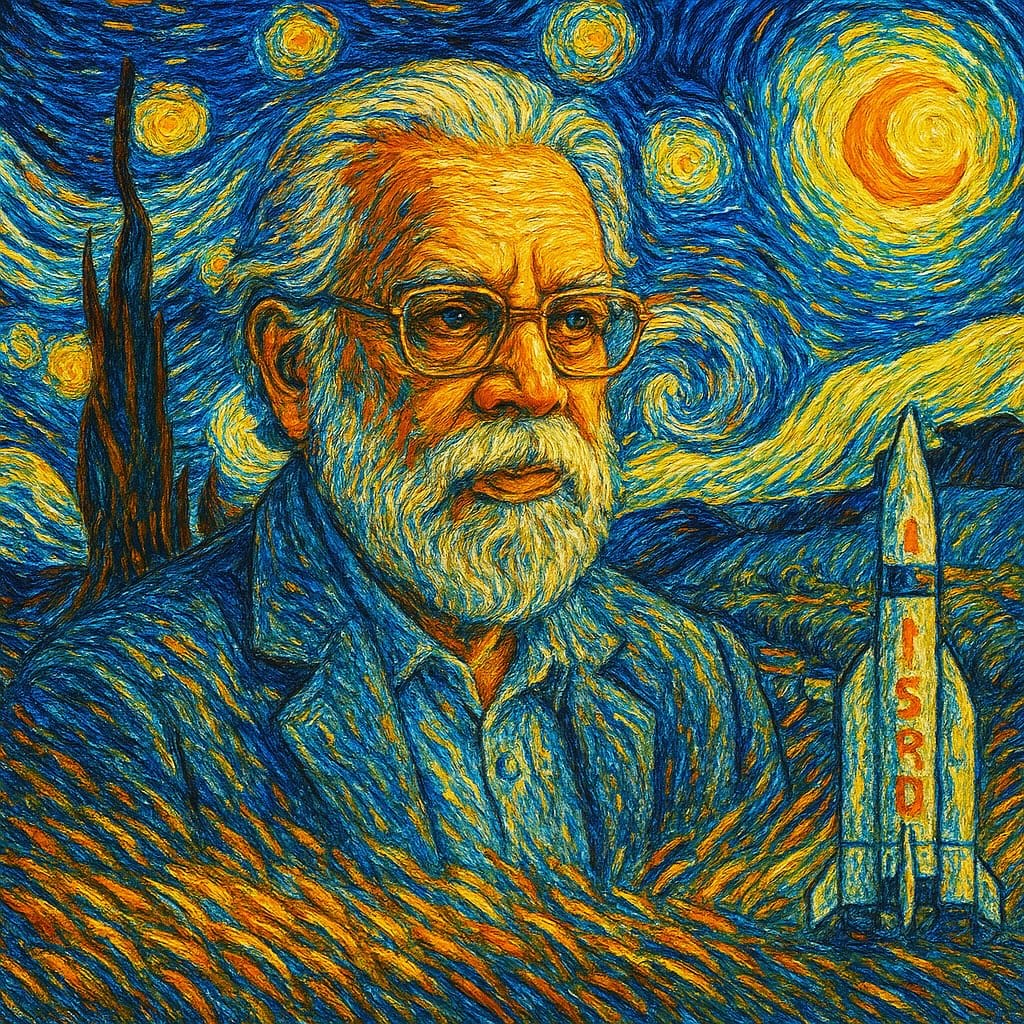The Quiet Fire: Nambi Narayanan’s Journey Through Injustice
Framed by false accusations, ISRO scientist Nambi Narayanan endured a harrowing battle against stigma and injustice. His journey from disgrace to vindication is a powerful testament to resilience, truth, and the quiet strength of a determined mind.

Introduction
In the annals of Indian scientific history, the name Nambi Narayanan evokes both pride and pain. A brilliant aerospace engineer with the Indian Space Research Organisation (ISRO), Narayanan was instrumental in India’s early efforts to develop cryogenic engine technology. However, in 1994, his life was violently derailed when he was falsely implicated in an espionage case. The stigma that followed—social, institutional, and personal—was relentless, testing not just his professional integrity but also his human endurance. His story is not only about one man’s quest for justice but a mirror to how institutions and society can fail their most dedicated citizens.
The Stigma Faced by Nambi Narayanan
The espionage case that engulfed Nambi Narayanan began in Thiruvananthapuram, Kerala, where he was accused of leaking confidential defense secrets to foreign agents. The charges, which were later proven to be baseless, led to his arrest, custodial torture, and widespread media trial. Despite the lack of concrete evidence, the social and professional fallout was severe.
Media Vilification
The Indian media was quick to pounce on the scandal. Without waiting for judicial clarity, newspapers splashed headlines that labeled Narayanan a traitor. For a scientist whose work symbolized national pride, this sudden public condemnation was deeply scarring. The stigma extended beyond newsprint—it penetrated public perception, isolating him and his family.
Institutional Abandonment
One of the most crushing blows came from within the system he had served. ISRO distanced itself, and government bodies failed to defend his innocence or question the dubious origin of the allegations. He was suspended, his contributions forgotten. Narayanan himself recalled:
"Neither coalition wanted to admit the error in their judgment, as it was a matter of prestige for both."
This institutional betrayal was perhaps the most corrosive form of stigma, as it reflected a lack of courage among the very bodies that should have protected their own.
Personal Isolation
The emotional toll of the case extended to his family and social life. Friends became distant. Strangers stared or whispered. Even after the courts vindicated him in 1996, the cloud of suspicion lingered. The stigma did not end with the legal proceedings—it had already etched itself into the collective memory.
How He Handled It
Despite the immense pressure, Nambi Narayanan displayed remarkable composure and resilience. Here are some of the ways he handled the stigma:
Unwavering Faith in Truth
Narayanan never deviated from his assertion of innocence. He held fast to his belief that truth would eventually triumph. He once said:
"The only impossible thing is that which you believe to be not possible."
This inner conviction became his armor against despair.
Legal Perseverance
He fought a long legal battle, seeking not just exoneration but accountability. His efforts led to the Supreme Court ordering a compensation and the Kerala government forming a judicial inquiry. This relentless pursuit of justice kept the case alive in public consciousness.
Intellectual Engagement
Even after the accusations, Narayanan remained engaged with scientific communities and later, with public discourse. He wrote books and gave lectures, reclaiming his identity as a scientist and public intellectual.
Reframing the Narrative
By publicly sharing his experience, including in his biography and in media interviews, Narayanan reframed the narrative. He did not allow himself to be remembered only as a victim; instead, he became a symbol of resilience against institutional injustice. Reflecting on the prolonged duration of the case, he once remarked:
"He asked me why my case is getting prolonged for so long. He said, 'I understand that it has been more than 19 years.' I told him that it was because of the games played by various political parties that it was still going on."
Lessons We Can Learn
The journey of Nambi Narayanan is not merely one of personal vindication but a study in how societies handle—or mishandle—those who fall under suspicion.
Institutional Accountability is Crucial
One of the biggest failures in Narayanan’s case was the absence of institutional self-examination. Government bodies and scientific institutions must develop mechanisms to protect their members from arbitrary persecution.
The Media Must Exercise Restraint
The media plays a powerful role in shaping public perception. As seen in this case, premature judgments can have long-lasting, damaging effects. Journalistic ethics and legal due process must go hand in hand.
Personal Integrity Can Prevail
Perhaps the most important takeaway is the strength of personal integrity. In the face of extreme pressure, Narayanan remained composed, reasoned, and focused. His example teaches us the importance of mental resilience.
Stigma Lingers Even After Vindication
Even after being cleared by the courts, Narayanan faced social and psychological remnants of stigma. This underlines the need for comprehensive support systems—both legal and emotional—for those falsely accused.
Conclusion
Nambi Narayanan’s story is a haunting reminder of how quickly a life can unravel when society surrenders to suspicion without evidence. It is also a story of courage and conviction. While the legal and governmental apologies came too late to undo the suffering, they helped restore some of his honor. His life invites us to reflect on how we treat those accused, how we hold power to account, and how we can build systems that balance vigilance with fairness.
In the quiet dignity with which Narayanan reclaimed his name, there lies a powerful message: Justice, however delayed, must be pursued—and stigma, however enduring, can be confronted with truth.
